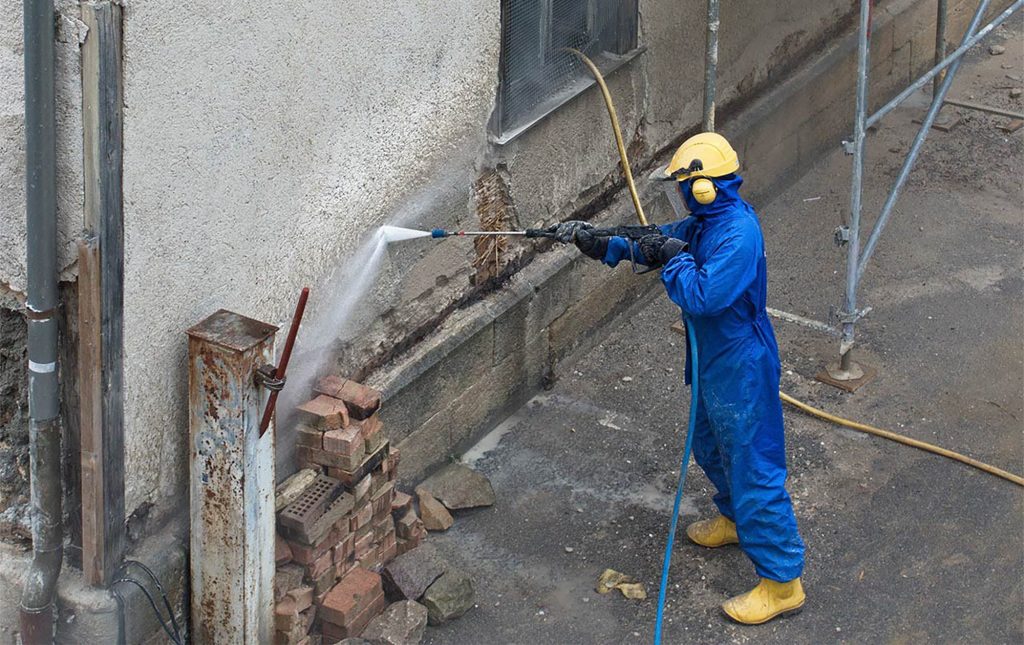Sandblasting of building facades in Europe from the A1-Restorations campaign | Blog. Sandblasting of facades is not only an effective but also a versatile technique that allows for adaptation to different materials and surfaces. This method is particularly valuable when working on historical and cultural monuments, where the original texture and integrity of the material must be preserved. By fine-tuning the pressure and selecting the right abrasive, sandblasting can be soft and delicate, which is ideal for the careful restoration of valuable architectural objects.
In addition, sandblasting makes it much easier to prepare the surface for subsequent restoration or painting work. After sandblasting, the surface is smooth and clean, which provides better adhesion to new coatings and increases their durability. Thus, this method not only cleans the facades from dirt, but also improves the quality and longevity of the next coating layer.
An important feature of sandblasting is also its cost-effectiveness. Compared to traditional cleaning methods such as manual sanding or the use of chemical solvents, sandblasting reduces working time and labor costs. This makes it a favorable choice for large projects where large areas of facades need to be cleaned in a short time. These advantages have made sandblasting the preferred method in many construction and restoration projects throughout Europe.
Features and benefits
Sandblasting has gained its popularity due to:
- high cleaning speed compared to manual processing with conventional tools;
- low demand for water use, it is either not required at all, or it is needed in small quantities;
- surfaces treated with sandblasting acquire a rough surface with good adhesion.
Various ways to perform sandblasting
Sandblasting of facades can be carried out:
- Dry method
This processing option is very common due to its simplicity and minimal need for equipment. Of the disadvantages, it is worth noting the large dust formation. Such cleaning can be carried out at any time of the year. - Wet treatment (hydroblasting)
When cleaning facades with this method, the air-abrasive torch is absorbed by a dusty water cloud or directly by water. At the same time, the formation of dust will be minimal, and the work itself is carried out at a high speed. This cleaning option can be performed only in the warmer months. - The dust-free method
This method of cleaning surfaces is not harmful to health, so it is carried out where people cannot be excluded.
Price/quality ratio
Widely used in Europe, facade sandblasting has a number of significant advantages that make it the preferred choice for restoration and repair work. One of the key advantages is its effectiveness in removing various types of dirt, including graffiti, oxidation stains, old paint and even corrosion. This makes the method particularly suitable for the restoration of historic buildings, where it is necessary to carefully remove layers of dirt without damaging the structure of the facade.
In addition, sandblasting offers a high speed of operation, which is an important factor for large-scale projects. This reduces the overall time required to complete the work and minimizes inconvenience to residents or building users. Due to this efficiency, sandblasting also proves to be cost-effective as it reduces labor and associated costs.
Equally important is the environmental aspect of sandblasting. Many European countries pay great attention to the ecological safety and sustainability of restoration processes. Modern sandblasting technologies allow the use of environmentally friendly abrasive materials, such as baking soda or processed glass powder, which effectively remove contaminants without harming the environment. This makes sandblasting not only an efficient but also an environmentally responsible choice for repair and restoration work in Europe.
When used
The demand for sandblasting increases from year to year, customers turn to perform work on:
- cleaning the facade after a fire;
- removal of old paint or plaster from facades;
- preparation of wooden facades for decorative finishing or painting;
- restoration of the appearance of facades of residential buildings and architectural monuments.

